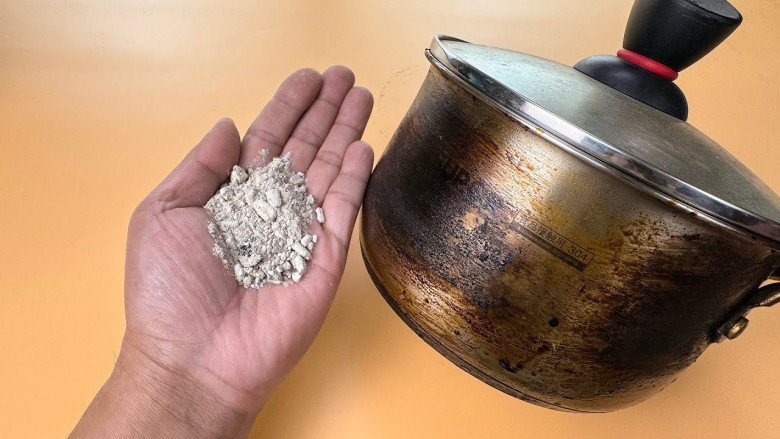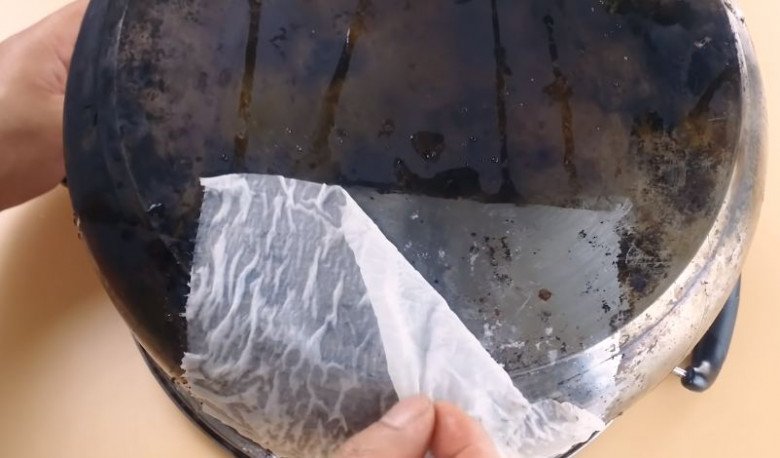A dirty blackened stainless steel pot not only affects its aesthetics but also diminishes its heat conductivity, leading to unnecessary gas wastage during usage.
Almost every household has several stainless steel pots for cooking, but after a period of use, these pots often accumulate yellow and black stains on their exterior. These stains are typically stubborn and challenging to remove with regular cleaning, causing a lot of inconvenience in daily life.
The reason behind stainless steel pots turning yellow or black is often due to food residue and grease deposits that accumulate at the bottom of the pot over extended periods of use, forming stubborn stains. Combined with improper usage and delayed cleaning, stainless steel pots gradually lose their shine.
This not only affects their aesthetics but also reduces their heat conductivity, resulting in unwarranted gas wastage during usage. Therefore, to keep stainless steel pots clean and in good condition, regular cleaning is essential.
To remove stains around the stainless steel pot, you can apply the following simple methods:
Method 1: Using white vinegar + baking soda + mosquito coil ash + salt
Spray white vinegar on the exterior surface of the stainless steel pot. White vinegar acts as a softener and can help dissolve stains more quickly. Next, sprinkle some mosquito coil ash around the pot.
Mosquito coil ash is a type of plant ash that contains a lot of alkali. These substances act as natural cleaners and have strong disinfectant properties. Additionally, the small particles in mosquito coil ash also have a polishing effect, making it easier to remove stains at the bottom of the pot and restoring its original shine.
Then, continue by sprinkling baking soda on the exterior surface of the pot. Baking soda has strong cleaning abilities, and when mixed with a cleaning solution, it generates a large amount of gas bubbles, which act as a strong cleaning agent. Let it sit for about half an hour to help dissolve the stains, making it easier to scrub.

After half an hour, use a steel scrubbing pad to scrub the exterior surface of the pot. At this point, you can sprinkle a bit of coarse salt on the pot’s surface to increase friction, making it easier to remove stains. Once you’ve finished scrubbing, simply rinse with clean water, and the stainless steel pot will be clean and shiny like new. For stubborn black or yellow burns inside the pot, you can also use this method.
Method 2: Baking soda + white vinegar
With this method, you can spray white vinegar onto the stainless steel pot’s surface, then sprinkle baking soda on top. Next, cover the surface with a paper towel and continue spraying white vinegar on top.

Leave it for a few hours or overnight, then remove the paper towel. A magical transformation will occur. At this point, the pot’s surface will have regained its shine, with minimal stains. If the stains are too stubborn, use a steel scrubbing pad for a few strokes, and the stainless steel pot will shine like new.

Method 3: Pineapple peels
Apart from the first method, there’s a simpler way to clean stainless steel pots. With this method, all you need is a suitable amount of pineapple peels, put them into the stainless steel pot, and add an appropriate amount of water. Note that the water level should be higher than the level of oil and dirt.
Afterward, place the pot on the stove and bring it to a boil for approximately 15 to 20 minutes. Once it reaches a boiling point, pour out the water and pineapple peels, then use a soft cloth to gently wipe the pot’s surface until it’s as clean as before.
To better protect the stainless steel pot, it’s important to understand the proper usage method. Try to concentrate the flame in the middle of the pot’s base to prevent it from spreading across the entire base, minimizing the chance of the surrounding area turning yellow or black.












